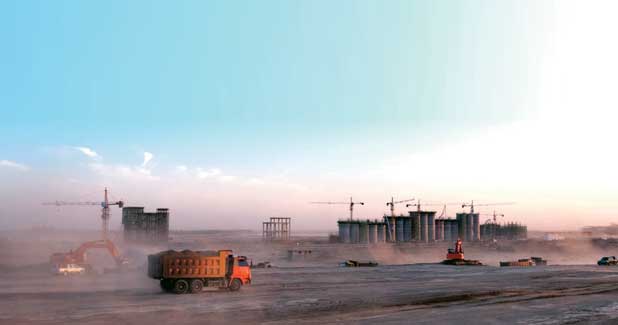
Transitioning Towards a Universal Iot Ecosystem
The exponential growth of Industrial IoT has propelled an innate need for all the organisations out there to adopt and adapt to the IoT ecosystem. Everyone is eager to jump the IoT wagon, however, it is not as easy as it sounds. It is only natural to get overwhelmed with the umpteen number of choices of technologies, devices, protocols, vendors and integrators that are showcasing their prowess in the market. One of the major challenges faced by organisations developing or employing connected solutions is the lack of availability of a single solution that can be deployed across different variety of construction equipment, while simultaneously, eliminating the barrier between new equipment and legacy equipment. Another roadblock is the effort wasted on developing a robust connectivity pipeline between edge devices and the cloud. As a result, the Industrial IoT scene today remains largely fragmented and needs different mechanisms to facilitate interactions across diverse environments. <p></p> <p>It is quite difficult to find a one-stop shop that offers a proven end-to-end IoT ecosystem. Organisations go through the ordeal of procuring the required hardware, choosing one of the available platforms and building their own front-end systems, which might take years to tie it all together. This might be even more difficult to achieve with larger scale IoT projects with loads of IoT communication protocols, industrial and IoT compliance standards and many types of sensors for various equipment with sensor data everywhere (all depending on the scope on the project). This makes it vitally important to choose a solution that not only bridges it all and enables those numerous things, sensors and data to "talk" to each other, but also helps the organisation make sense of it all and trigger actionable insights to build better next-generation products and services. </p> <p>Sensing the need for a vertical, equipment and client-agnostic solution that is also scalable, modular and versatile, Kloudq launched "Tor", India's first universal IoT system which is a complete IoT ecosystem in itself and is fully configurable platform for Telematics, Asset Management and Energy Management. Tor successfully integrates all the critical components in an end-to-end manner assimilating the four building blocks viz. a gateway, the platform, the application and the analytics. One of our most remarkable use cases is that of a large contracting company with a diverse mix of industrial equipment such as gensets, excavators, transit mixers, backhoe loaders û some as old as purchased in 2003. We were able to bring this diverse mix of equipment (in terms of the make, variety, type and breadth) on to the same platform and application using a common hardware thanks to Tor. </p> <p>Traditional gateways mostly perform protocol translations. They are not intelligent, programmable devices that can perform in-depth and complex processing on streaming IoT data. One of the main considerations while designing Tor was to come up with a system that could enable seamless interoperability - A system that could improve responsiveness and support new operating models, thereby giving more power to the users without any dependencies. Some of the unique features of this ecosystem that stand out are Dual Core processing unit, edge analytics, built-in GPS, proactive email alerts, configurability and conformance to the latest compliances. Next-generation IoT gateways will open up huge opportunities to push processing closer to the edge, improving responsiveness and supporting new operating models. As IoT networks proliferate and use cases expand, the demands for IoT gateways with these capabilities will only intensify. </p> <p>Connect with Kloudq on contactus@kloudq.com to know how we can help your organisation make the best out of the copious amount of data derived from numerous sources and strategise better for a future-ready tomorrow.</p> <p> (Communication provided by company)</p>


 +91-22-24193000
+91-22-24193000 Subscriber@ASAPPinfoGlobal.com
Subscriber@ASAPPinfoGlobal.com